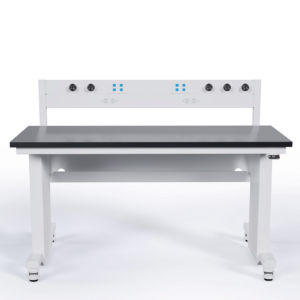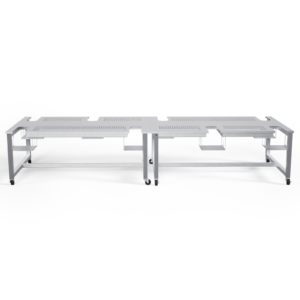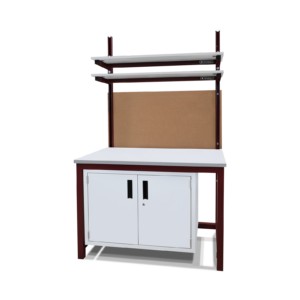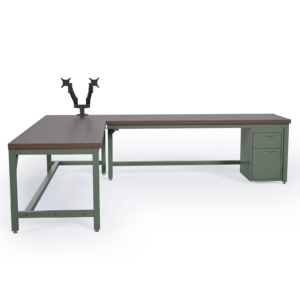2022 Was supposed to be Different. Then Omicron Happened.
Thanks to the widespread deployment of vaccines (in the Western world at least), there was widespread optimism that 2022 would be the year we could see the backside of the Coronavirus pandemic.
Yet it was not to be, at least not yet.
The wildly infectious Omicron variant has led to a renewed surge in infections that threaten to overwhelm the healthcare system and have caused the public to rethink their personal timelines for returning to the office, to school, and to hospitality venues.
Will We See a Shift from a Covid Pandemic to a Covid Endemic in 2022?

When can we get out of this mess?
The good news, of course, is despite spreading like wildfire, the Omicron variant seems less dangerous overall (particularly for those who have vaccine boosters). There are also signs it may be peaking in areas that were hard hit first, such as the UK, which could presage some relief in the USA by February.
If Omicron peaks in February, what comes next?
Fingers crossed, we may shift from a worldwide pandemic to a more controlled endemic phase, whereby the Coronavirus remains a threat but can be controlled with vaccines and therapeutics. That would be welcome news and signal a return to renewed economic growth as the public returns to office environments, schools, hospitality venues, and business travel.
The big IF, however, is whether another more dangerous variant could arise.
Our best defense in preventing such an outbreak is to vaccinate the world’s population, especially in those countries where vaccination rates remain below 10%.
New low-cost vaccines, such as CORBEVAX™ developed at Baylor College of Medicine (which will be produced around the world without any royalty) should help. Also on the horizon are updated vaccines, such as an Omicron-specific shot under development by Pfizer, as well as new pre-print research that cannabis-derived compounds can inhibit the virus, leading some to speculate about a future clinical “pot shot” treatment. (NOTE: these compounds are effective only at lower temperatures, so smoking marijuana doesn’t appear to offer measurable protection against Covid.)
Omicron Delays the Return to the Office, Hospitality Venues, and the Classroom
Given the uncertainty of Omicron, what effect is it having on the demand side for the furniture industry? Let’s take a look at some of the key inputs affecting the market as we kick-off 2022.
· The Return to the Office Delayed for Many
The first issue is that the emergence of Omicron is causing many companies to delay plans to require office employees to return to onsite work in company offices. (According to the Los Angeles times, office workers populations in the LA area recently dropped to a low of only 26.5%)
As the Wall Street Journal reports, the longer people have worked remotely, the harder it will be to get them back in the office.
And employees continue to have the upper hand in setting the terms for their employment, given the record high level of turnover, dubbed “the Great Resignation.” (We’ll report on how employers can step up their recruiting/retention efforts in response to this in a future article.)

· Hospitality, including Hotels and Restaurants
Staffing is a major concern in the hospitality market. Hotel occupancy rates recovered somewhat in the second half of 2021, but many hoteliers were unable to staff up to provide normal levels of service. This may lead to a long-term shift toward more “self-service” offerings, from food service to room cleaning.
Restaurants, especially hard hit during the pandemic, were hoping for a strong 2021 holiday season to make up for earlier losses. But bookings sagged as patrons canceled holiday parties, putting many venues in a financial bind with calls by industry trade groups for more government financial assistance.
Ironically, labor cost-cutting is off the table for restaurants, as it’s proving difficult to hire staff, making even a short-term cutback on hours counterproductive as employees respond walking out the door for other opportunities, often in sectors outside of hospitality. The long-term result may be more robot-powered, self-serve restaurants that resemble food trucks.
· Business Travel and Conventions
January 2022 marked the return of the Computer Electronic Shows (CES) in Las Vegas, a positive sign for a return to “normal,” yet there was widespread concern about Omicron infections. This concern is affecting the airline industry as well, as the public, which was just getting used to the idea of flying – thanks to mask wearing in flight as well as thorough filtering of cabin air (though a record number of assaults by unruly passengers remains a risk in the air.) Ground transportation also remains tricky, as rental car shortages continue to make reservations hard to come by and the daily rental rates remain stubbornly high.
The bottom line? It’s a safe bet we can expect to rely heavily on “Zoom meetings” and business conference calls as we go into 2022.
· K-12 and University/College Attendance Way Down
The rise of Omicron has caused many school districts across the country to consider returning to remote learning, at least for a few months until the peak of the current viral wave passes.
Fortunately, there are signs that Omicron may not be as dangerous for young people compared to earlier variants, such as Delta.
However, staffing issues continue to plague school districts as increasing numbers of teachers are out sick with Covid, and teachers decide to leave their teaching posts for retirement or another field of work.
Students are also missing from classrooms, with school attendance way down. Enrollment in colleges and universities has dropped by a record amount as well by – down by as many as a million students according to some studies.
K-12 educational institutions will need to take advantage of new Federal funds to make their interiors safer (with increased sanitization and airflow, for example.) For more information, see our recent article on this topic.
Many secondary schools will need to adapt to lower enrollments as prospective applicants take stock of the cost/benefit of a college degree and elect to pursue a trade school education instead.

Furniture Manufacturers are Facing Multiple Financial Headwinds in 2022
The Coronavirus pandemic continues to affect the furniture manufacturing industry, with labor shortages, raw material supply challenges, increasing prices, and transportation/logistics issues leading the list.
· Worker Shortages
As we enter 2022, the manufacturing industry at large is experiencing difficulty hiring and holding onto workers (particularly in the chip manufacturing sector) as well as a drop in production due to workers out sick with Covid. As we mentioned earlier, the Great Resignation is affecting this sector as well.
· Rising Inflation
The rising cost of labor and raw materials is also a major concern; the US inflation rate hit 7% recently, a number not seen since the early 1980s. There is hope that this is a temporary phenomenon and inflation will subside by the end of 2022. However, many manufacturers have been unable to continue absorbing these increased costs, and some, like Ikea, have announced significant price increases. Construction projects are also facing major price increases due to shortages in workers and raw materials.
· Fed Tipped to Raise Interest Rates
Borrowing costs have been historically low since the Great Recession of 2008, but the Fed has signaled its plans to raise interest rates in 2022, in part to control rising inflation. Businesses that have come to rely on cheap money will have to readjust to paying higher interest rates. Similarly, government agencies (such as school districts) that rely on issuing bonds to fund new projects may want to accelerate plans to avoid paying higher rates in the future.
· Overseas Supply Chain Issues
As we’ve reported recently, companies that rely heavily on sourcing products and components from overseas manufacturers have found it increasingly difficult to know if and when their orders will get delivered. This leads to a cascade of scheduling issues, with many construction projects delayed or brought to a standstill waiting on deliveries.
One positive outcome from this situation is that an increasing number of companies are looking to bring manufacturing plants back to the USA. (Note: Formaspace builds all its furniture at our Austin, Texas factory headquarters using as many locally produced raw materials as possible, including locally produced steel.)
· Transportation/Logistics Delays
Transportation issues are not limited to imports. Domestic transportation issues continue to bedevil domestic manufacturers too, due to widespread shortages of truck drivers and congested railway freight operations.
· Import Tariffs
The Trump administration imposed 25% duties on steel, and 10% aluminum imports via the seldom-used Section 232 of the Trade Expansion Act of 1962 (which allows imposition of trade barriers for goods that “threaten or impair the national security.”) This led to retaliatory tariffs by other countries. (Trump later exempted Argentine, Australia, Brazil, and South Korea, and later Canada and Mexico.)
The incoming Biden administration was expected to reverse this policy in its entirety but to date has only reached an agreement to eliminate the tariffs vis a vis the EU. Unfortunately, these tariffs raised the price of domestic metals, a big issue for furniture manufacturers such as Formaspace.

Despite the Pandemic, There are Positive Signs of Confidence in Office Building and Life Science Research Facility Investment
Despite the ongoing Coronavirus pandemic, many major real estate investors are bullish on the long-term prospects for the commercial real-estate market and are making significant investments.
For example, developer Michael Shvo recently led a $2 billion effort to acquire San Francisco’s iconic Transamerica Pyramid office town and a pricey New York property on Fifth Avenue.
On the west coast, Brookfield Asset Management was successful in leasing over 100,000 sq feet in the California Market Center to athletic goods manufacturer Adidas, the biggest LA area lease deal in over a year.
In particular, life science remains exceptionally strong; biotech is a growth industry, and demand remains strong for developing/leasing space for laboratory research facilities.

Is the Hybrid Model Here to Stay in the Office and Education Markets?
The Wall Street Journal quote cited earlier bears repeating here: “the longer people have worked remotely, the harder it will be to get them back in the office to get them back.”
Many office workers, especially those in high-demand STEM fields, are in the catbird seat when it comes to the job market, and many have redesigned their lives around remote work, electing to move out of expensive urban areas to leafier suburbs or resort-like rural settings.
In the book, Petersen and Warzel point out that they are not against working in the office; rather, they point to the arbitrariness of fixed time schedules, e.g. Monday through Friday 9 to 5, as the reason many of us become dissatisfied with office work.
In their view, workers who have tasted the flexibility of remote work appreciate that it offers several key advantages, such as greater ability to take care of children (or aging parents) or the ability to more equitably share home responsibilities with a spouse.
In their surveys, they also find that remote workers highly value eliminating the time and cost of commuting to work each day – as well as the ability to often work quietly and casually at home without always having to dress up every day to impress a boss or a customer.
Working from Home Creates its Own Set of Problems for Employees
Yet the prospect of working in the office still has its attractions for many workers, according to Petersen and Warzel. In particular, employees do miss the opportunities of working closely with colleagues to brainstorm and solve problems, a je ne sais quoi quality that is often lacking in Zoom conference calls.
Employees also report that at times they are eager to escape the home after being cooped up for weeks at a time, particularly if the available work-from-home space is cramped or not well laid out for productive work. (The problem is compounded when a spouse also works from home or there are children enrolled in remote learning.)
Another issue is the lack of time boundaries that many workers experience when working from home – e.g. work starts the minute they roll out of bed and start to read emails on their phone or computer and continues non-stop until they go to bed. This is causing some workers to pine for the opportunity to return to the office to put in 8 hours of work and then “shut down” –leaving the balance of the day for other activities.
If the insights of Petersen and Warzel are accurate, workers would prefer work to take on the best of both worlds – e.g. a flexible, hybrid work where employees work at home much of the time and only come into the office for important meetings and opportunities to collaborate.
The challenge for architects, designers, and facility planners is how to accommodate this hybrid work trend.
Creating a sense of worker safety is paramount, with more generous spacing between workers as well as significant improvements in natural ventilation, inside airflow, and HEPA filtration to filter the air and remove virus particles. In one piece of good news, a recent pre-study shows that Coronavirus loses its 90% of its ability to infect within 20 minutes, which could help simplify the process of sanitizing areas, especially those with good ventilation.
Another strategy many designers are pursuing is to blend the indoors with outdoors, either by building sheltered atriums that bring the outside in or by designing attractive outdoor areas with functional workspace furniture elements. Either approach has the added advantage of introducing naturally calming “biophilic” elements (such as live plants) as well as coveted outside views to the office.

Does a future world of work built around hybrid work schedules suggest that hybrid remote learning is in the cards for primary educational institutions?
The answer is probably not.
Evidence is increasing that remote learning among K-12 students has led to significantly poorer learning outcomes.
In light of this, we predict that primary schools will elect to return to full-time in-person learning as soon as possible (albeit with improved ventilation and air filtering) – retaining the use of remote learning tools for after-school learning enrichment and homework tutoring programs.
What Happened to the Once-High-Flying Flex Office/Co-Working Business Model?
Though it now seems a long time ago, prior to the pandemic, flex offices and co-working spaces were the talk of Wall Street investors eager to cash in on the latest real estate trend.
At the time, there were high expectations for the IPO of WeWork, the leading player in the co-working trend.
So what happened?
You may recall that WeWork had a disastrous IPO, and chief executive Adman Neumann suddenly resigned in 2019 amid an uproar over heavy losses. (He’s back in the news once again, this time to assemble a rental-housing empire.)
Then the Coronavirus pandemic came, and the co-working industry’s client base ran for the exit – as large companies, small startups, and individuals alike retreated from risky shared working spaces in favor of the safety of working from home, or, in the case of true digital nomads, renting Airbnb spots around the world or RV’ing in the great outdoors (#vanlife).
Could the flex office/co-working business model revive as the pandemic subsides?
We think it can – once confidence in working face-to-face returns. Once reason for this is real estate leasing costs continue to rise, which makes a lower-cost shared space more economical for small businesses.
We also think that larger companies may see value in establishing regional satellite office/meeting spaces that cater to workers who have spread out into a wider geographical area – yet could benefit from occasionally driving to a closer location to meet up face-to-face with other remote workers from the same company or to meet customers.
A survey by REIT giant JLL supports these views. In their December 2021 tenant survey, “The Future of Flex,” JLL found that 41% of tenants expect to increase their use of flex space as part of a post-pandemic workplace strategy.

Is Service as a Space (SAAS) the Future of Office Environments?
On the other hand, the flex office/co-working business model may evolve into something new as it becomes absorbed into corporate office culture – under the moniker of Service as a Space (SAAS).
The idea behind SAAS is for companies to transform their traditional office real estate – characterized as one desk assigned to each employee – into what is essentially an in-house flex office/co-working environment – one that supports a world of hybrid work where employees come and go at different times of the day on different days of the week.
The SAAS philosophy thus opens up new opportunities for architects, designers, and facility planners to reconsider how to allocate space throughout the week or even throughout the day.
For example, large spaces equipped with folding mobile desks could be quickly reconfigured into conference meeting rooms or gathering/exhibition spaces – by rolling folding desks and tables to the side or into storage areas until they are once again needed.
Adding this kind of flexibility to an office environment effectively doubles or triples the productivity of a given floorplate, an important consideration in light of rising real estate leasing costs.

Embrace the Future of Work with Formaspace
What opportunities do you hope to see in 2022?
If you can imagine it, we can build it, here at our Formaspace factory headquarters in Austin, Texas.
Contact your Formaspace Design Consultant today and find out why leading companies, including Apple, Capital One, Dell Computer, Google, Twitter, Oculus, and SpaceX choose Formaspace furniture solutions.









